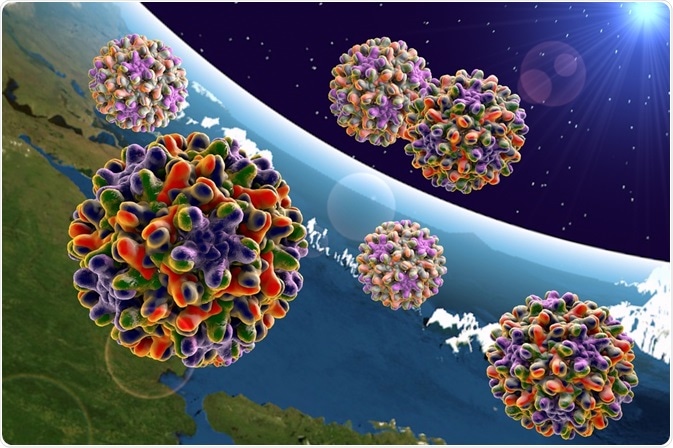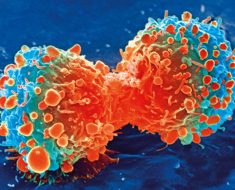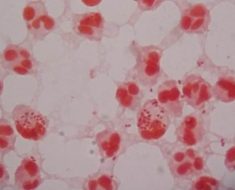Astro microbiology (also called exo microbiology) is the study of microorganisms in space, or under space conditions.

Image Credit: Kateryna Kon / Shutterstock
Life in space is of interest to scientists because on Earth, microbes are sometimes the only living organisms found in extreme conditions such as very high or low temperatures, high salt concentrations, high levels of radiation, or limited nutrients in the environment.
It is expected that for an organism to exist in space, it needs to be able to survive extremely harsh conditions, therefore, microbes seem to be the most likely candidate.
Abundance of microbes
Microbes show a great amount of flexibility in terms of the conditions they can tolerate, and this can be demonstrated by the ability of microbes to continue to perform regular biological functions in these environments.
For example, proteins and DNA are likely to be damaged if conditions change dramatically; therefore, specially evolved mechanisms are needed if the microbe is to survive.
Certain microbes are able to live in harsh environments because their metabolism is adapted for these conditions, therefore they are able to grow and do not have to have special mechanisms in place to survive.
Microbes can tolerate environmental changes through various mechanisms: certain species of microbes can shut down their metabolism and form a resilient “spore”, while others make compounds that help to protect the microbe from harsh conditions.
Another way to survive is through a mechanism that allows a microorganism to repair the damage that has been caused by the change in environmental conditions. These mechanisms can ensure the survival of the microbes for a short time, or even for long periods of time.
What happens to microbes in space conditions?
Some existing laboratories have the capability to simulate certain space conditions, for example creating a vacuum and varying temperatures.
However, it is not possible to simulate the amount of UV radiation that would be expected in space, because there are no sources able to emit in the “extraterrestrial UV radiation spectrum”.
Several studies focused on using Mars simulation facilities showed that the acidophilic bacterium Acidithiobacillus ferrooxidans was able to grow in Mars-like geochemical conditions, without needing nutrients added to the minerals in the simulated Martian soil.
In fact, the layer of Martian minerals appeared to provide a protective function. More detailed research will hopefully reveal more about the ability of microbes to survive in Martian soil.
Another way to study how microbes are affected by space is using facilities in Low Earth Orbit (LEO).One study to use one of these facilities, the “ADAPT” study, used a strain of the bacterium Bacillus subtilis that had been exposed to increasing UV until it developed resistance to a high level of UV radiation.
Spores of this UV resistant B. subtilis were then sent into the LEO facility. After a year and a half, the research found that if the B. subtilis spores were shielded from radiations in space, then 8% were able to survive in LEO, while all B. sublitis spores survived simulated Mars conditions.
Do humans bring microbes into space?
Humans carry a high number and large variety of microbes, termed the microbiome or microbiota. These microbes associated with humans are connected to the processes within the human body.
What this means is that we all carry a “cloud” of microbes with us, which will therefore be present in spacecraft. Therefore, the microbes found on the International Space Station (ISS) are of interest, both for the health of the crew and for the integrity of the ISS.
Research found that the bacterium Salmonella enterica showed increased virulence in a mouse infection model when grown in space conditions.
In this study, S. enterica was grown on earth as well as aboard a space shuttle. This showed that the activity of 167 genes were different depending on the conditions, which resulted in 73 proteins showing a difference in their expression – i.e. there was greater or lesser protein expression in one condition compared to the other. One of the genes was Hfq, which is the regulator that was behind the changes observed.
What does the future hold for Astro Microbiology?
In order to be able to discover life in space, continued investigation of the limits of life on earth is necessary so that habitable environments in space can be identified.
This would involve exposing microbes found on earth to conditions of space, and importantly exposing them to various conditions at the same time; for this, it would be necessary to take microbes up into space.
Sources:
- Venturing into new realms? Microorganisms in space.
- Salmonella study.
Further Reading
- All Microbiology Content
- Gram Negative Bacteria
- Differentiating Between Microbial Species
- Quorum Sensing and Pseudomonas aeruginosa
- Single Cell Microbiology
Last Updated: Oct 8, 2018

Written by
Dr. Maho Yokoyama
Dr. Maho Yokoyama is a researcher and science writer. She was awarded her Ph.D. from the University of Bath, UK, following a thesis in the field of Microbiology, where she applied functional genomics toStaphylococcus aureus . During her doctoral studies, Maho collaborated with other academics on several papers and even published some of her own work in peer-reviewed scientific journals. She also presented her work at academic conferences around the world.
Source: Read Full Article





